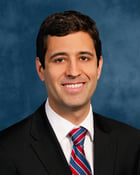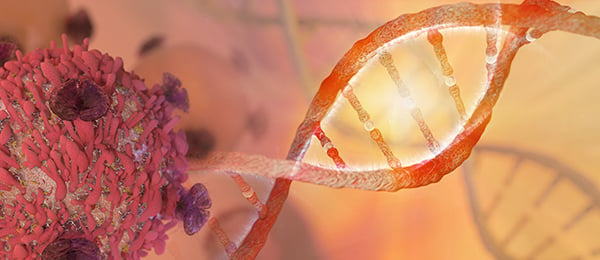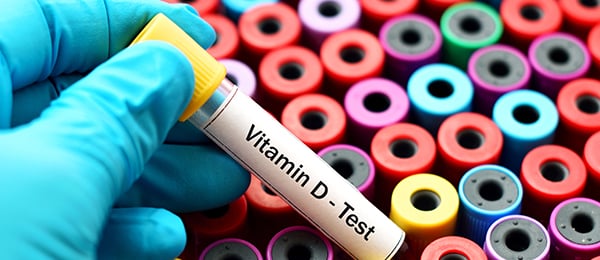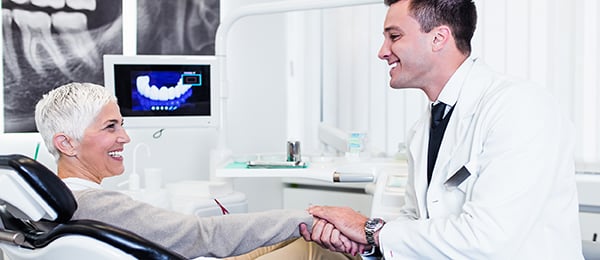Chronic ulcerative stomatitis (CUS) is a rare, immune-mediated mucocutaneous disorder with clinical and histologic overlap with oral lichen planus (OLP) and vesiculobullous diseases (VBD). In this study, published online October 29, 2018 in Head and Neck Pathology, researchers assessed the demographic, clinical, histologic, and direct immunofluorescence features (DIF) of CUS.
Researchers from the University of Florida (UF) in Gainesville conducted a literature review of all published cases of CUS, as well as a retrospective search of cases in the archives of the UF Oral Pathology Biopsy Service from 2007 through 2017. They identified 52 cases (47 women, 5 men) in the literature search and 17 cases (all women) in the archives search. The median age of patients was 59 years (range, 22-86 years) in the literature review and 64 years (range, 47-83 years) in the archives search. Most patients were white.
The buccal mucosa was the most common location of lesions in both the archives search (53%) and the literature review (37%). The gingiva was the second most common location in the researchers’ series (47%), but it was the third most common location in the literature search (27%). The tongue (31%) was the second most common location identified in the literature search; however, no lesions were located on the tongue according to the archives search.
The most common clinical presentations in the 17 cases from the archives search were erythema (76% of patients), pain/burning (76%), leukoplakia (65%), and ulcerations/erosions (35%). These 4 presentations were also the most common in cases in the literature review, but the percentages differed (ulcerations/erosions, 65%, leukoplakia, 40%, erythema, 37%, and pain/burning, 29%).
The clinical features of CUS overlap those of erosive OLP and autoimmune diseases, including benign mucous membrane pemphigoid, pemphigus vulgaris, and systemic lupus erythematosus. DIF testing is the best method of distinguishing erosive OLP from CUS, which is important because CUS generally is refractory to corticosteroid treatment.
The antimalarial agent hydroxychloroquine is the recommended treatment for patients with CUS. However, it is associated with several adverse effects, such as gastrointestinal symptoms, agranulocytosis, and aplastic anemia.
Histologic features of the cases identified in the archives search included subepithelial separation from the underlying connective tissue, atrophic epithelium, and an inflammatory infiltrate that contained a significant number of plasma cells and lymphocytes. DIF testing revealed a characteristic speckled pattern of IgG in the nuclei of basal and parabasal cells. Fibrinogen was present in 11 cases identified in the archives search and 13 cases identified in the literature search. In addition, testing for C3 was positive in 2 cases in the archives search and 5 cases in the literature search. Although several cases in the literature search tested positive for IgA or IgM, no cases in the archives search tested positive for these antibodies.
As the findings from the literature review and archives search showed, some clinical and histologic features of CUS overlap those of OLP and VBD. However, CUS also exhibits immunofluorescence features that differentiate it from OLP and VBD. Clinicians and pathologists need to consider this entity when encountering long-standing, recalcitrant, or refractory oral ulcerative diseases with mixed features, and they should confirm their suspicions with DIF testing. Further studies are needed to define this clinically and immunopathologically diverse entity, the authors concluded.
Read the original article here or contact the ADA Library & Archives for assistance.
Analyzing genetic alterations in HPV–positive and –negative oral squamous cell carcinoma
Human papillomavirus (HPV) causes a subset of oral squamous cell carcinomas (OSCCs) whose incidence is rapidly increasing in the United States. These head and neck cancers differ in many ways from HPV-negative OSCCs. The objective of this study, published online December 18, 2018 in Genome Research, was to analyze secondary genetic alterations in OSCCs by means of DNA and RNA sequencing.
Patients who had recently received a diagnosis of oral cavity or oropharyngeal squamous cell carcinoma at The Ohio State University Comprehensive Cancer Center (OSUCCC) from 2011 through 2016 were eligible to participate in this study. The overall study population was composed of 112 patients from OSUCCC and 372 participants from The Cancer Genome Atlas (TCGA) project.
Cases included 149 HPV-positive and 335 HPV-negative OSCC tumor/normal pairs. Of the 149 HPV-positive cases, 103 (86 in the OSUCCC cohort and 17 downloaded from the TCGA website) were studied by means of whole genome sequencing (WGS) and 46 by means of whole exome sequencing (WES). Of the 335 HPV-negative cases, 50 (26 in the OSUCCC cohort and 24 from TCGA) were studied by means of WGS and 285 by means of WES.
The researchers tested tumor DNA samples for 37 HPV types (Roche Linear Array, Roche Molecular Diagnostics). They confirmed the viral types by identifying type-specific HPV E6/E7 genes using TaqMan quantitative polymerase chain reaction. Of 149 HPV-positive cancers, 128 (86%) were positive for HPV16, 11 (7.4%) for HPV33, 6 (4%) for HPV35, 2 (1.3%) for HPV18, and 1 each (0.7%) for HPV59 and HPV69.
Different behavioral risk factors underlying HPV-positive and HPV-negative OSCCs are reflected in distinctive genomic mutational signatures, the authors wrote. In HPV-positive OSCCs, the signatures of APOBEC cytosine deaminase editing, which are associated with antiviral immunity, were strongly linked to overall mutational burden. In HPV-negative OSCCs, T > C substitutions in the sequence context 5′-ATN-3′ correlated with tobacco exposure.
Universal expression of HPV E6∗1 and E7 oncogenes is essential in HPV-positive OSCC. In addition, the researchers identified or confirmed significant enrichment of somatic mutations in PIK3CA, KMT2D, FGFR3, FBXW7, DDX3X, PTEN, TRAF3, RB1, CYLD, RIPK4, ZNF750, EP300, CASZ1, TAF5, RBL1, IFNGR1, and NFKBIA. Many of these genes affect host pathways, including p53 and pRb, already targeted by HPV oncoproteins, or they disrupt host defenses, including interferon and nuclear factor-κB signaling, against viral infections.
Frequent changes in copy number also were associated with concordant changes in gene expression. Chromosome 11q (including CCND1) and 14q (including DICER1 and AKT1) were lost repeatedly in HPV-positive OSCCs, in contrast to their gains in HPV-negative OSCCs. High-ranking variant allele fractions implicated ZNF750, PIK3CA, and EP300 mutations as candidate driver events in HPV-positive cancers.
In this study, the researchers identified several genetic alterations in HPV-positive OSCCs that distinguish them from HPV-negative OSCCs. Among these characteristics were mutational signatures, recurrent somatic mutations and candidate early driver genes, subchromosomal gains and losses affecting gene expression, and distinct gene expression profiles.
The researchers concluded that virus-host interactions shape the distinctive genetic features of HPV-positive OSCCs. HPV-positive OSCCs are characterized by secondary alterations in genes and pathways often targeted by HPV oncoproteins and those defending against viral infections, including the interferon signaling pathway. These genetic alterations promote persistence of HPV infection, carcinogenesis, and tumor immune evasion. The investigators anticipate that these study findings will foster advances in diagnosis and treatment of OSCC.
Read the original article here or contact the ADA Library & Archives for assistance.
Evaluating serum vitamin D levels in patients with recurrent aphthous stomatitis
Vitamin D deficiency is a major public health problem worldwide. However, the role of low serum vitamin D levels in patients with recurrent aphthous stomatitis is unclear. The aim of this cross-sectional study was to compare serum vitamin D levels in patients with recurrent aphthous stomatitis with levels in healthy people. The study was published online November 9, 2018 in BMC Oral Health.
The study was composed of 40 patients (25 women, 15 men) with recurrent aphthous stomatitis (group 1) and 70 healthy volunteers (38 women, 32 men) (group 2). The mean (standard deviation [SD]) age of participants was 31.2 (10.05) years in group 1 and 27.44 (7.96) years in in group 2 (P = .06). The researchers conducted the study in the Dermatology Clinic of Palandöken State Hospital in Erzurum, Turkey.
Inclusion criteria were being 18 years or older, having a validated history of at least 3 episodes of recurrent aphthous stomatitis in the preceding 12 months, and having only minor lesions (< 1 centimeter in diameter). Exclusion criteria were being older than 50 years, having a systemic disease that could cause oral ulcers, being pregnant and lactating, and taking vitamin D supplements within the previous 6 months.
The researchers drew blood samples from participants and collected the samples in 5-milliliter tubes. They used centrifugation to separate the serum and immediately stored the samples at –80°C. Using the electrochemiluminescence binding method (COBAS reagent kit, COBAS e601 analyzer series, Roche Diagnostics), the investigators measured serum 25-hydroxycholecalciferol levels.
The study results showed a statistically significant difference (P = .004) in mean (SD) serum vitamin D levels between patients with recurrent aphthous stomatitis (group 1) and healthy participants (group 2) (11.00 [7.03] nanograms/mL and 16.40 [10.19] ng/mL, respectively). In addition, mean (SD) vitamin D levels were higher in men (15.27 [6.94] ng/mL) with recurrent aphthous stomatitis than in women with the condition (8.44 [5.82] ng/mL)
(P = .002).
The investigators did not observe any statistically significant correlations between serum vitamin D levels and lesion diameter (r = 0.044; P = .79), number of lesions (r = 0.074; P = .651), or mean healing time (r = 0.013; P = .935). In light of the study findings, the researchers recommended that patients with recurrent aphthous stomatitis receive vitamin D as supportive treatment. However, further studies with larger sample sizes are needed to confirm these findings. In addition, prospective randomized clinical trials are needed to evaluate the potential role of vitamin D in treating this idiopathic condition.
Read the original article here or contact the ADA Library & Archives for assistance.
Acute and chronic osteomyelitis of the jaws: a 10-year review of cases
Acute and secondary chronic osteomyelitis of the jaws is characterized by bony involvement that is largely suppurative in nature, with associated sequestration and fistula formation. The objectives of this retrospective study were to review cases of suppurative osteomyelitis of the jaws, evaluate disease presentation, and identify any variables associated with treatment outcome. The study was published in the December 2018 issue of Journal of Oral and Maxillofacial Surgery.
The study cohort comprised patients treated at Massachusetts General Hospital in Boston, Massachusetts from April 2006 through October 2016. Inclusion criteria were a diagnosis of suppurative osteomyelitis of the jaw based on history and clinical findings, being older than 18 years, complete medical records, and sufficient clinical follow-up. Exclusion criteria were treatment with antiresorptive medications within the previous 10 years, a history of head and neck irradiation, lack of microbial growth on culturing, and inadequate clinical follow-up.
Forty-two patients (26 women, 16 men) met the inclusion criteria. Participants’ mean age was 53 years (range, 20-80 years). Relevant comorbidities included cardiovascular disease (22 patients), active tobacco use (19 patients), psychiatric disorders (19 patients), active alcohol use (9 patients), and bony disorders including osteopenia and osteoporosis, Paget disease, and cemento-osseous dysplasia (9 patients). In addition, 3 patients had a history of diabetes, and 3 patients were immunocompromised.
Of the 42 patients, 36 (86%) had undergone dental treatment—most commonly tooth extractions—adjacent to the area of infection, the authors wrote. In addition, 31 patients (74%) had received antibiotic treatment.
The researchers classified 9 patients as having acute suppurative osteomyelitis (defined as symptoms of no more than 1 month in duration) and 33 patients as having chronic disease. In all but 1 case, the mandible was involved exclusively. Affected mandibular sites included the body (n = 25), angle (n = 24), ramus (16.7%), parasymphysis (n = 7), symphysis (n = 3), and condyle (n = 3). Three patients had bilateral involvement. Patients’ most common complaints were pain and swelling, and one-half reported neurosensory change, ranging from partial paresthesia to anesthesia. The mean (standard deviation [SD]) duration of symptoms was 4.60 (6.64) months.
The most common bacterial isolate was α-hemolytic Streptococcus of the Streptococcus milleri group (74%), the authors wrote. Other microorganisms included coagulase-negative Staphylococcus species (43%), Propionibacterium acnes (31%), and Actinomyces species (29%). Sensitivity data for S. milleri indicated 64.5% resistance to erythromycin, 58% resistance to clindamycin, and 10% resistance to penicillin. Sensitivity data for coagulase-negative Staphylococcus species indicated 72% resistance to erythromycin, 61% resistance to clindamycin, and 55.5% resistance to penicillin. The Staphylococcus species also exhibited 44% resistance to levofloxacin and 39% resistance to ciprofloxacin and methicillin. All Staphylococcus isolates were sensitive to vancomycin.
A mixed pattern of lucent and sclerotic changes was the most common radiographic finding. The researchers found sequestration more often in patients with chronic suppurative osteomyelitis than in those with acute disease. However, they observed periosteal reaction in a larger proportion of patients with acute disease than in those with chronic disease.
All but 3 patients underwent surgical debridement. The mean (SD) duration of intravenous and oral antibiotic treatment was 5.87 (5.62) weeks and 13.71 (14.78) weeks, respectively. The mean (SD) follow-up time was 12.95 (18.25) months.
Successful treatment—defined as resolution of symptoms and radiographic evidence of healing after initial treatment—occurred in 36 of the 42 patients. Of the 6 patients who experienced treatment failure, 5 (83%) had a psychiatric disorder. Four cases resolved with additional debridement and antibiotic treatment, while 2 required more extensive procedures involving surgical resection and reconstruction. Logistic regression analysis revealed that an increased white blood cell (WBC) count and psychiatric disorder were significantly associated with treatment failure (odds ratio [OR], 11.00; 95% confidence interval [CI], 0.127 to 0.684; P = .005 and OR, 7.9; 95% CI, 0.013 to 0.404; P = .037, respectively).
The study findings showed that an elevated WBC count and psychiatric disorder were predictors of unsuccessful surgical outcomes. Future studies with larger sample sizes are needed to investigate other potential contributors to treatment outcome, as well as to develop a more standardized approach to diagnosis and treatment of suppurative osteomyelitis of the jaws.
Read the original article here or contact the ADA Library & Archives for assistance.

2019 AAOMP Annual Meeting
Join the American Academy of Oral & Maxillofacial Pathology at its Annual Meeting, June 7-June 12 in Miami, FL
The annual AAOMP Seminar panel session will be moderated by Dr. Indraneel Bhattacharyya, Division Head, University of Florida Oral and Maxillofacial Pathology. Learn about interesting cases from the University of Florida Oral Pathology team.
Earn additional CE credits by attending the following sessions:
- Symposium — “HPV & Oro-pharyngeal and Oral Cancer” — Dr. Gypsyamber D’Souza, Division of Cancer Epidemiology, Johns Hopkins University.
- Slide seminar —“Head and Neck Pathology” — Dr. Bruce Wenig, Section Head of Anatomic Pathology External Network Consultation Services and Head and Neck–Endocrine Pathology Program Moffitt Cancer Hospital.
- Slide seminar — “Hematopathology: Lymphoid lesions of the Head and Neck” — Dr. L. Jeffrey Medeiros, Chief of the Lymphoma Section in the Department of Hematopathology at the University of Texas M.D. Anderson Cancer Center.
- Founders Seminar — “Newly Defined (and Recently Refined) Head and Neck Tumors” — Dr. Justin Bishop, Associate Professor of Pathology, Otolaryngology-Head and Neck Surgery, and Oncology at Johns Hopkins Hospital.
- Gorlin Lecture — “Genetic Disorders Involving the Oral and Maxillofacial Region: A Dermatologist’s View” — Dr. Rudolph Happle.
Learn more at the meeting website.
2019 ADA Children’s Airway Conference  March 3-4, 2019
March 3-4, 2019
ADA Headquarters - Chicago, IL
Don’t miss the second ADA Children’s Airway Conference: Optimizing Pediatric Airway Health: The Critical Role of Dentists. This conference offers 10.5 hours of continuing education credit and will guide the general, pediatric and orthodontic practitioner in the significance of sleep-related breathing disorders in children and how the ADA policy statement on the Role of Dentistry in the Treatment of Sleep Related Breathing Disorders directs them to address the issue. Click here for more information and to register.

The consulting editor for JADA+ Specialty Scan — Oral Pathology is Faizan Alawi, DDS, Associate Dean for Academic Affairs and Associate Professor of Pathology, School of Dental Medicine; Associate Professor of Dermatology, Perelman School of Medicine; Director, Penn Oral Pathology Services; University of Pennsylvania |

The associate consulting editor for JADA+ Specialty Scan — Oral Pathology is Bruno C. Jham, DDS, MS, PhD; Associate Professor and Associate Dean for Academic Affairs; College of Dental Medicine – Illinois, Midwestern University |
|





